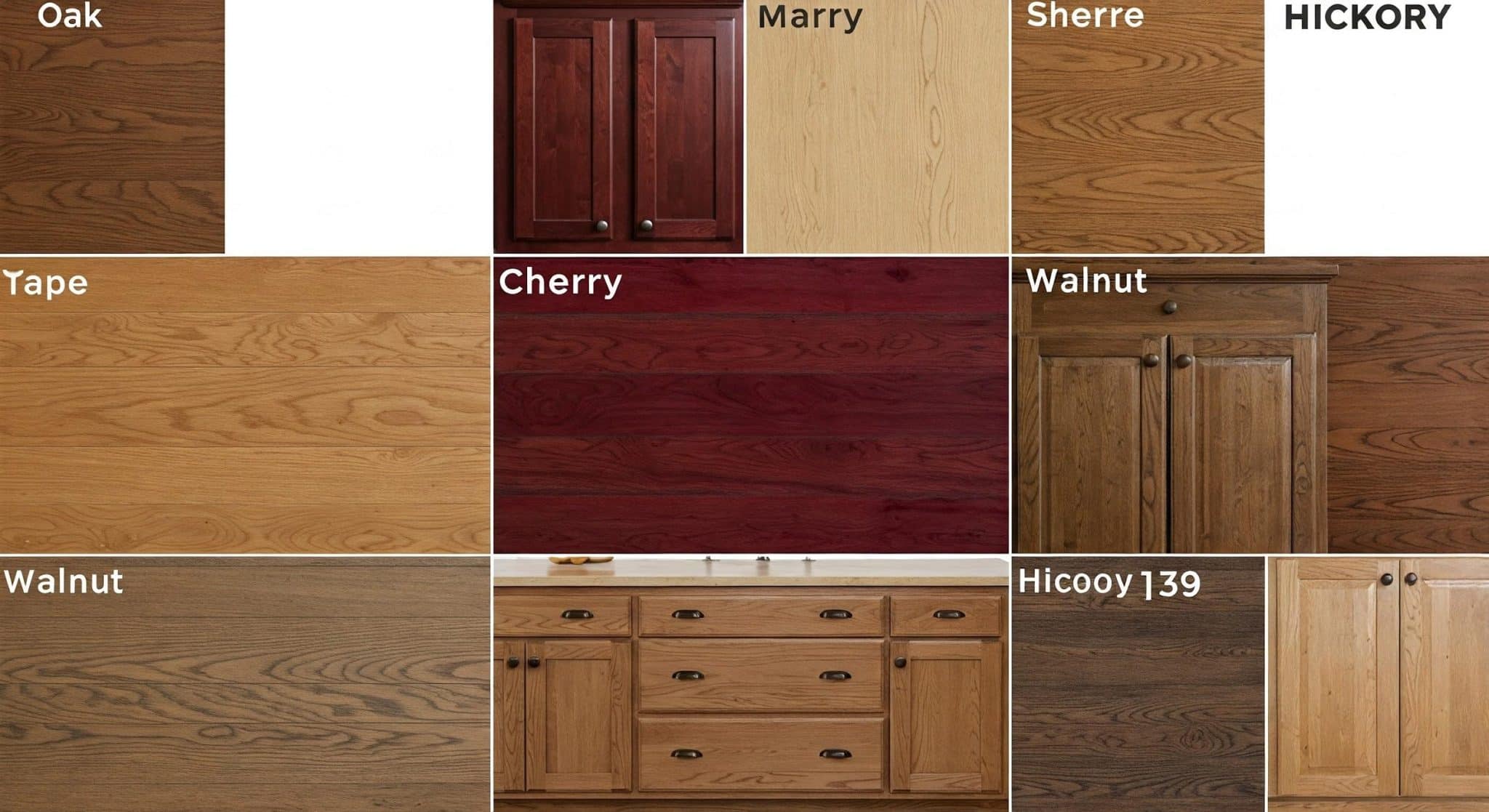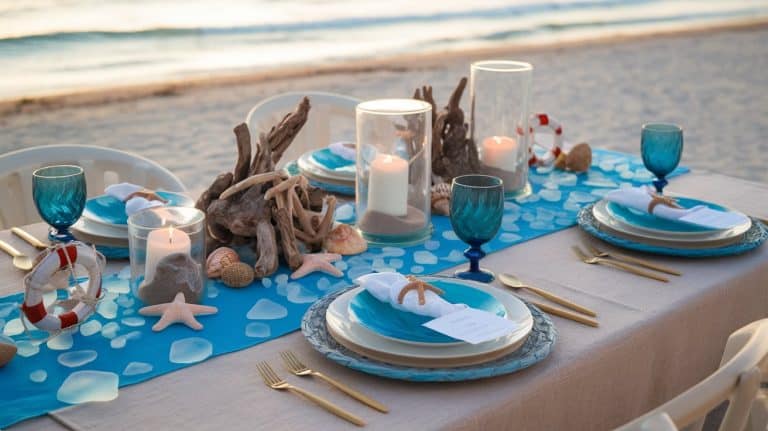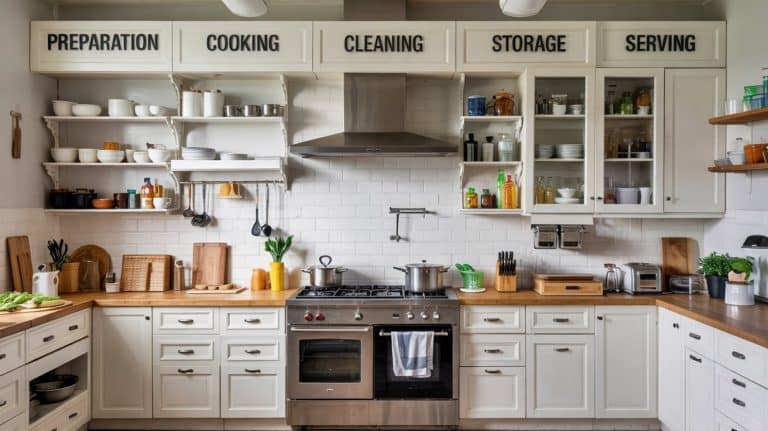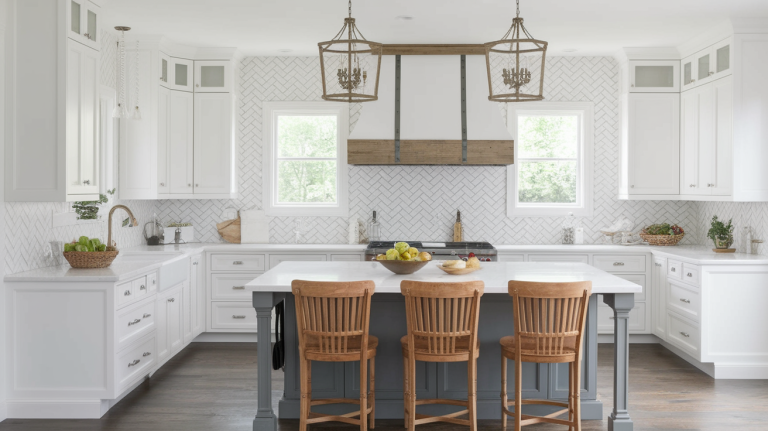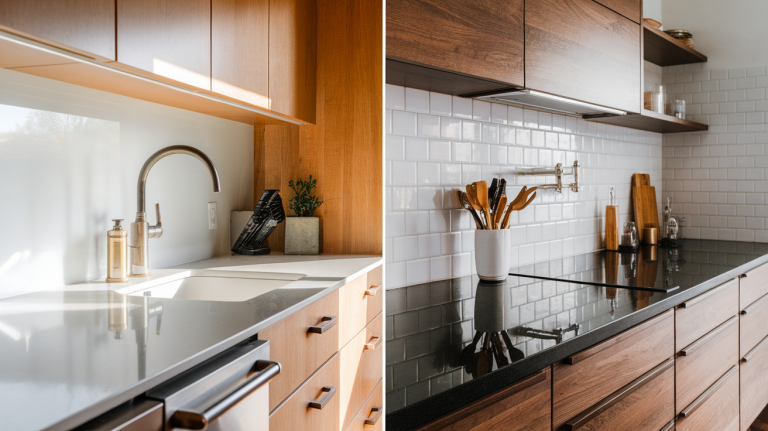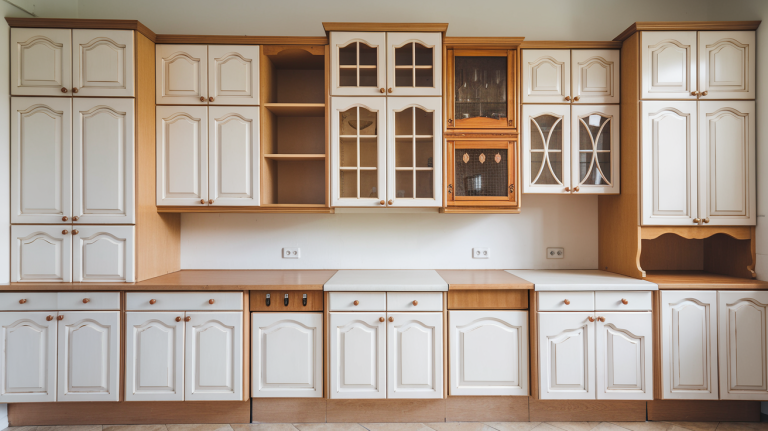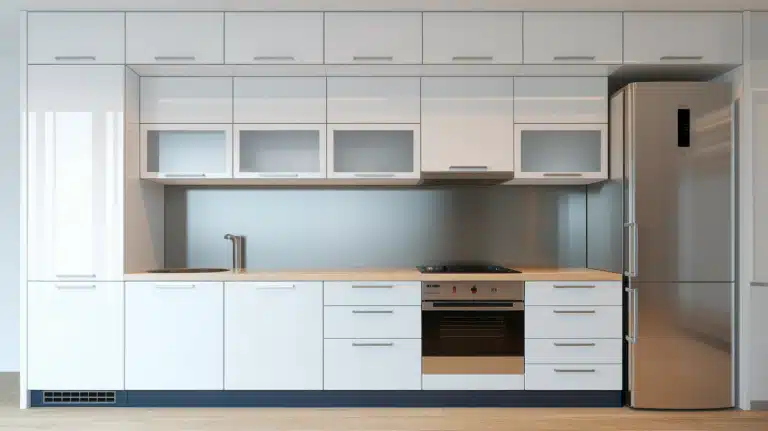7 Ideal Woods for High-Quality Kitchen Cabinetry
Kitchen cabinets need to be durable, visually appealing, and long-lasting. The right material affects not only the cabinet’s strength but also its resistance to moisture, scratches, and daily wear. Solid wood remains a top choice due to its durability, natural grain patterns, and ability to age well.
Though wood is a premium option, other materials like plywood, MDF, and particleboard are also widely used. This blog highlights seven of the best wood options for high-quality kitchen cabinetry, but first, we’ll explore other common materials used in custom cabinets.
Best Kitchen Cabinet Materials Apart from Wood
Wood is a popular choice for kitchen cabinets, but several other materials offer durability, affordability, and design flexibility, making it easier to upgrade your kitchen with the right fit.
- Plywood is one of the best alternatives, featuring multiple layers of wood veneer for strength and moisture resistance.
- MDF (Medium-Density Fiberboard) provides a smooth, consistent surface that works well for painted finishes but is less resistant to moisture.
- Particleboard is a budget-friendly option made from compressed wood chips, though it is prone to swelling if exposed to water.
- Laminate and melamine cabinets feature a synthetic coating over a core material, offering a durable, low-maintenance finish in various colors and patterns.
- Stainless steel provides a sleek, industrial look and resists heat and moisture, but it can easily show fingerprints and scratches.
While these materials serve as great alternatives, solid wood remains the standard for its strength and lasting appeal. Let’s break down the top choices, starting with oak.
1. Oak: The Classic Choice
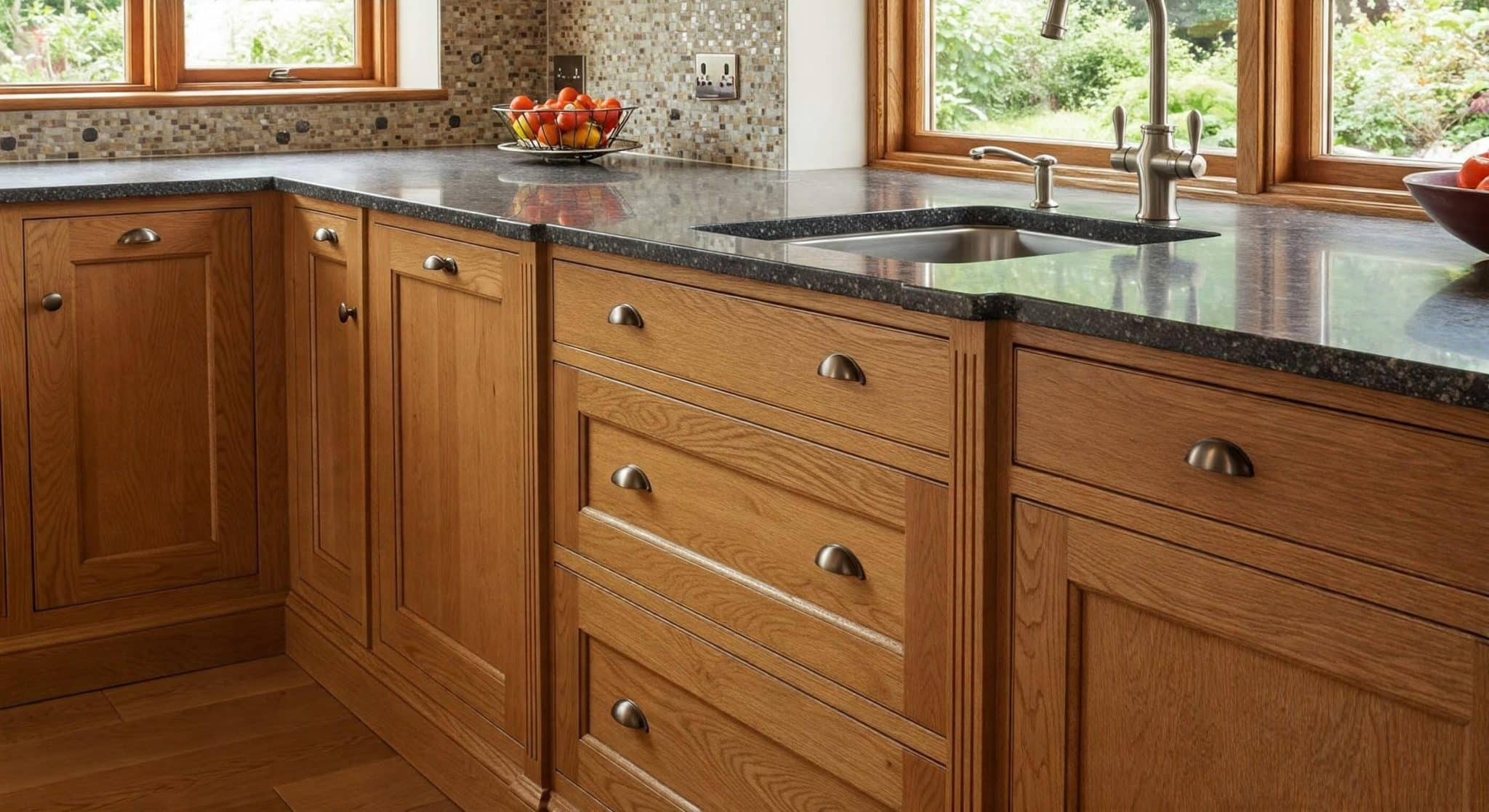
Oak is one of the most durable hardwoods used in kitchen cabinetry. It comes in two varieties: red oak and white oak, each with distinct characteristics. Red oak has a warm undertone with a coarse, open grain that adds texture to cabinet doors. White oak is denser, featuring a finer grain with a more uniform appearance, which gives cabinets a smooth, structured look. If you’re after an earthy boho kitchen, white oak provides a light, natural base that complements layered textures and organic materials.
Both types hold up well against wear and tear. White oak, with its tighter grain and closed pores, absorbs less moisture, reducing the risk of swelling in humid environments. Red oak, while slightly more porous, is still tough enough for daily use. Cost varies between the two, with red oak generally being more budget-friendly, while white oak commands a higher price due to its density and moisture resistance. Oak’s adaptability in stains and finishes allows it to work in a range of kitchen styles.
2. Maple: The Versatile Favorite
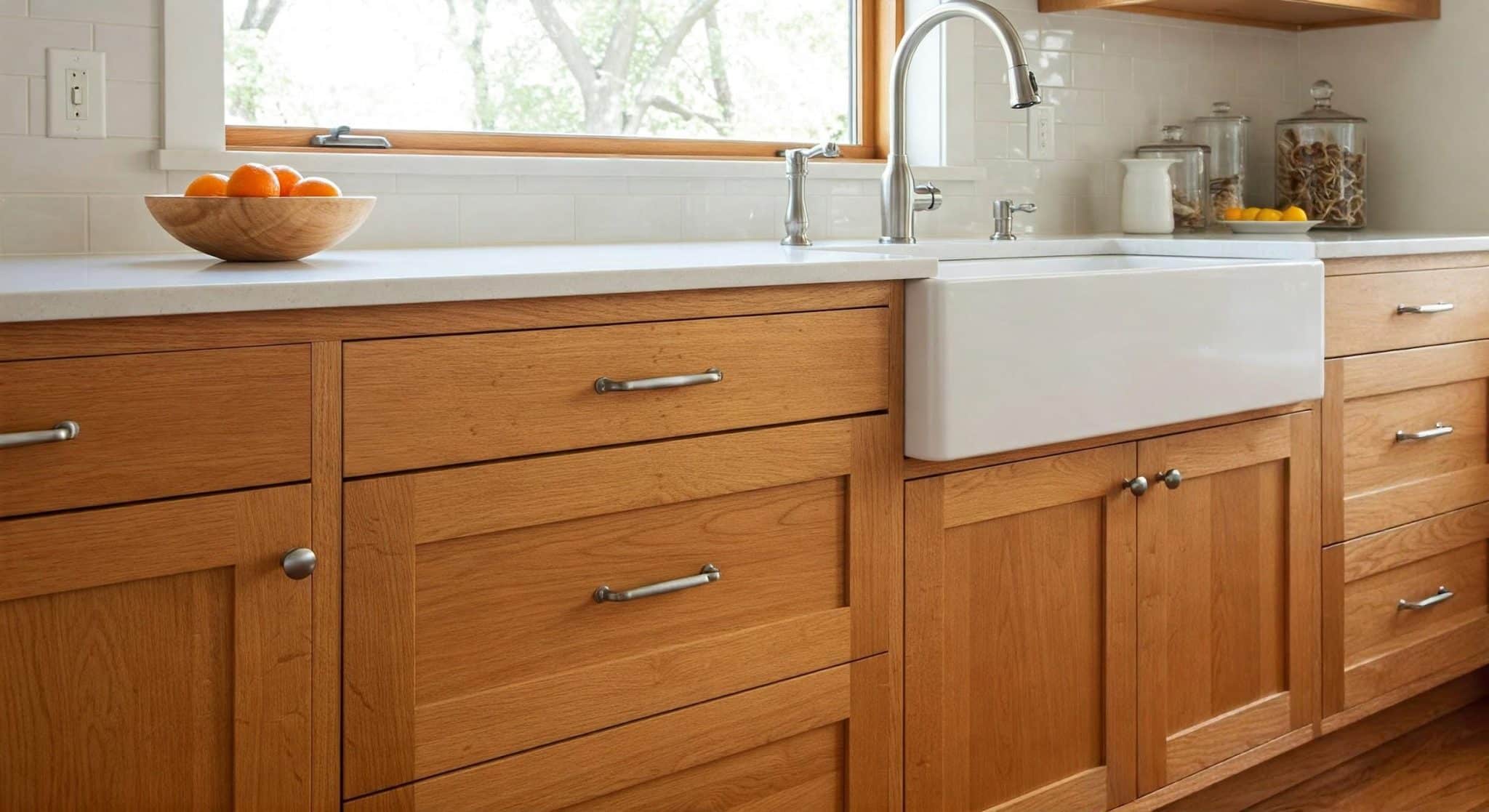
Maple is a dense hardwood known for its strength and smooth grain. It ranks higher in hardness than oak, making it resistant to dents and everyday wear. Its uniform texture allows for clean cuts and precise detailing, making it a preferred option for both traditional and contemporary cabinet styles.
Maple’s fine, closed grain absorbs stains evenly and can mimic the appearance of pricier woods like cherry. It also holds paint well, making it a common choice for painted cabinetry. The natural color ranges from pale cream to light reddish-brown, complementing both warm and cool-toned kitchens. Pricing for maple sits in the mid-range, typically costing less than walnut or cherry but more than birch or oak.
3. Cherry: The Luxurious Upgrade
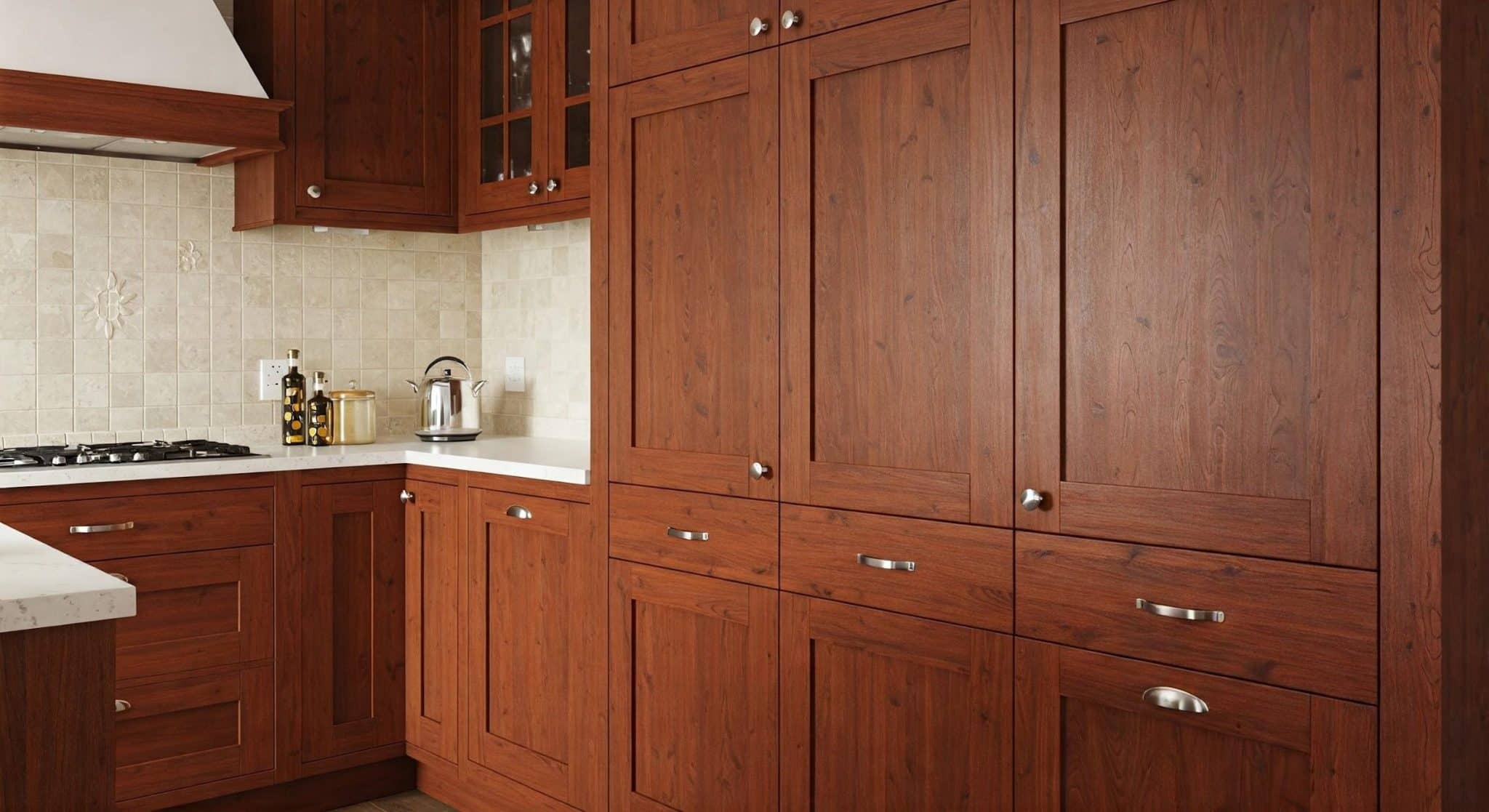
Cherry wood is a durable hardwood known for its smooth grain and deep, reddish-brown hues. Over time, exposure to light causes the color to darken and develop a rich patina, adding depth and character.
Cherry is strong and has a fine texture that resists warping, though it is slightly softer than maple or oak. It holds up well in kitchens but may show dents more easily if subjected to heavy use. The cost of cherry cabinets is higher than oak or maple, often 15–25% more expensive, due to their premium quality and appearance.
Cherry pairs well with traditional styling but can also work in modern spaces with lighter accents. Its aging process and natural color variation give each cabinet a unique appearance, enhancing high-end kitchens.
4. Walnut: The Premium Statement
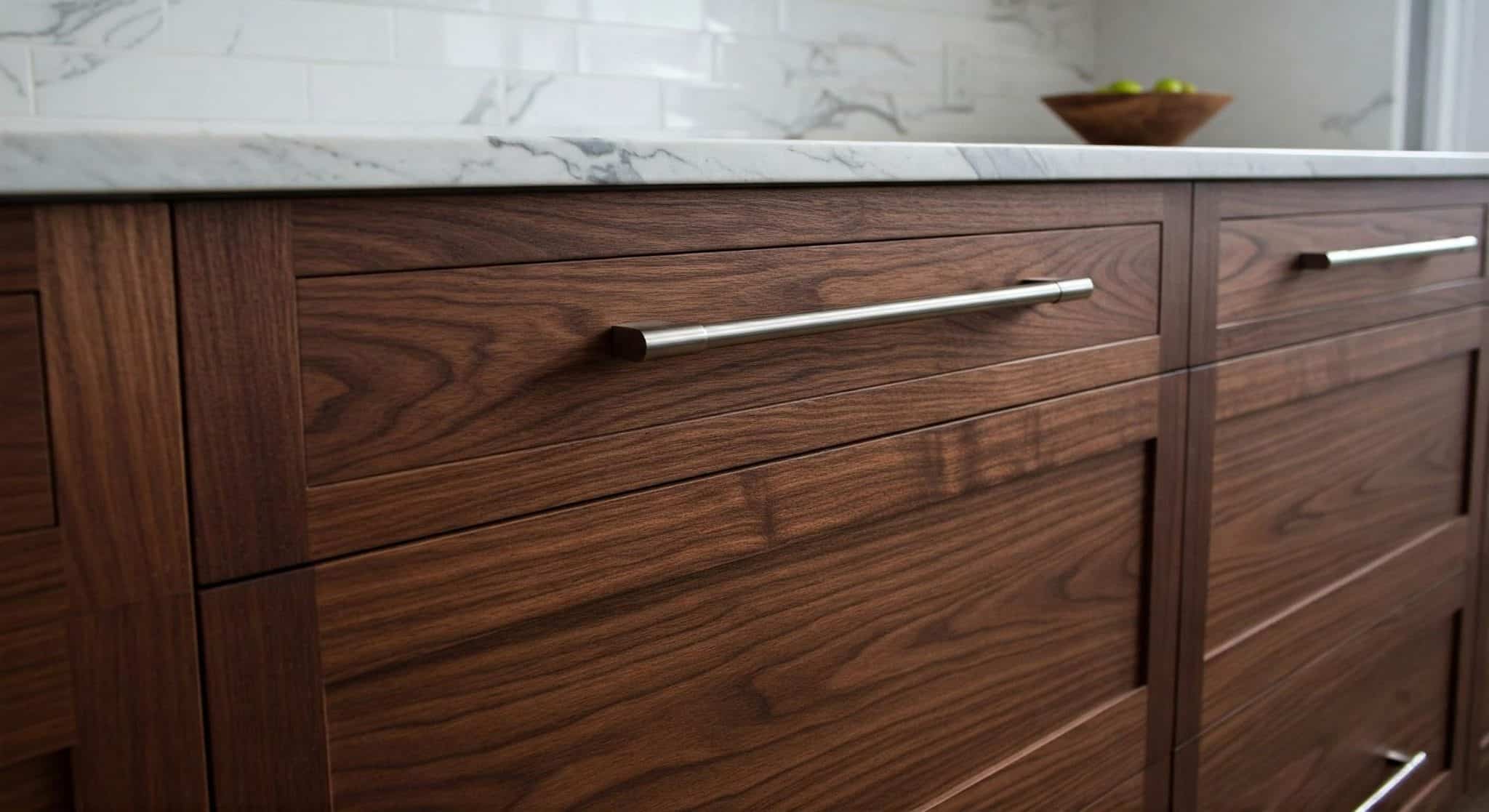
Walnut is a dense hardwood known for its deep brown tones and rich grain patterns. It has a smooth texture with natural variations in color, ranging from chocolate brown to lighter tan streaks. Unlike more uniform woods, walnut’s shifting tones create contrast within custom kitchen cabinets, adding dimension to their appearance.
This hardwood resists warping and holds up well over time, though it is softer than maple or oak and may show dents more easily. It is one of the most expensive cabinet woods, often priced higher due to its limited availability and premium status. Many custom cabinetry makers prefer walnut for its ability to be crafted into sleek, modern designs without additional staining.
Walnut complements minimalist, contemporary, and mid-century styles, making it a go-to choice for homeowners investing in custom cabinetry with a distinct, upscale look.
5. Hickory: The Rustic Powerhouse
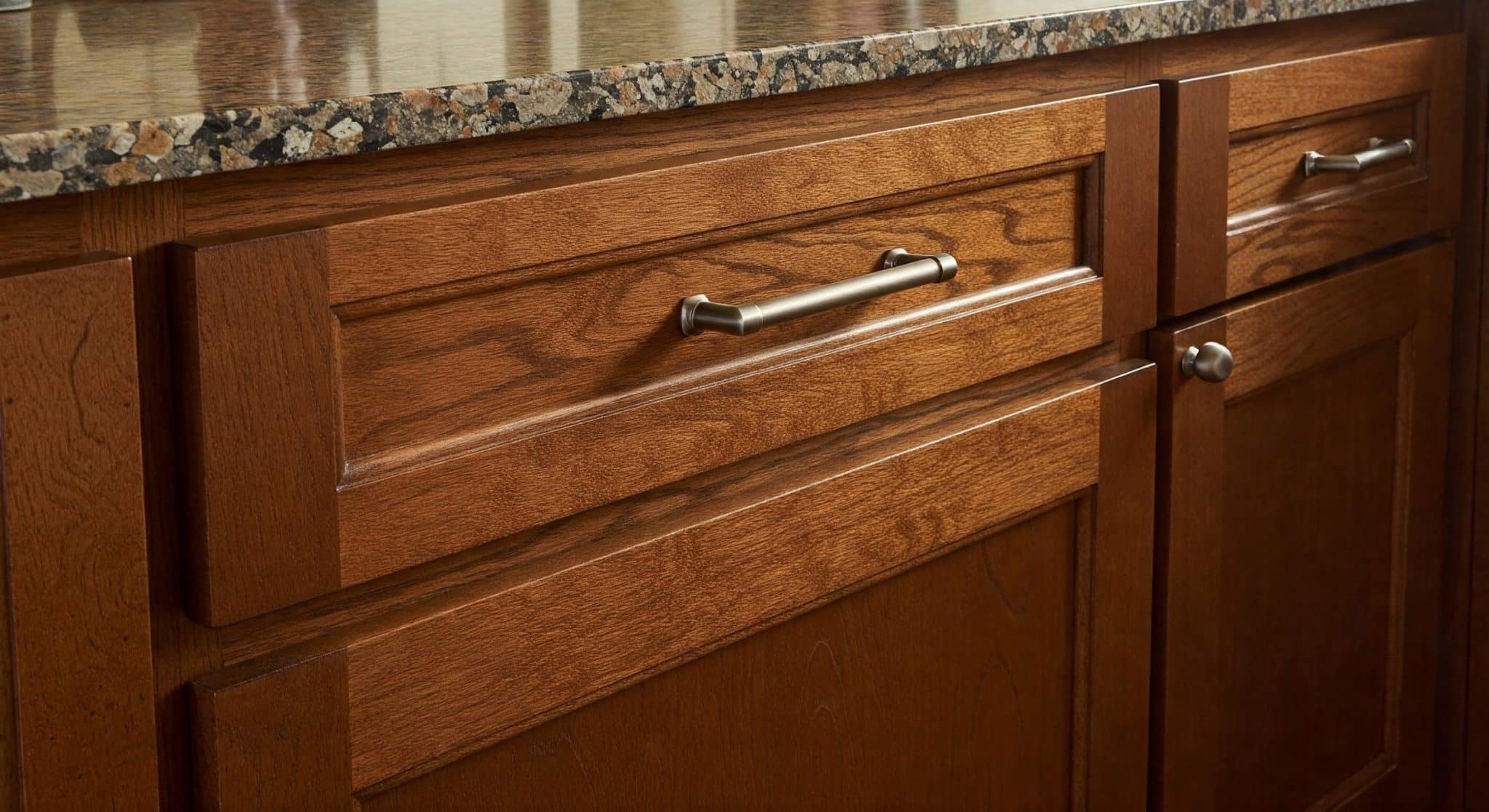
Hickory is one of the hardest domestic hardwoods used in cabinetry, ranking higher than oak and maple on the Janka hardness scale. Its dense structure allows it to withstand heavy use, making it a practical option for kitchens that see a lot of activity.
Hickory’s grain patterns are bold, with dramatic variations in color from light blonde to deep brown. The irregular grain and knots contribute to its rugged character, making it a common choice for farmhouse and rustic kitchen designs.
Hickory cabinets typically fall into the mid-to-high price range, often costing more than oak but remaining less expensive than walnut or cherry. Due to its density, hickory requires precise cutting and finishing, which can add to labor costs.
6. Beech: The Budget-Friendly Alternative
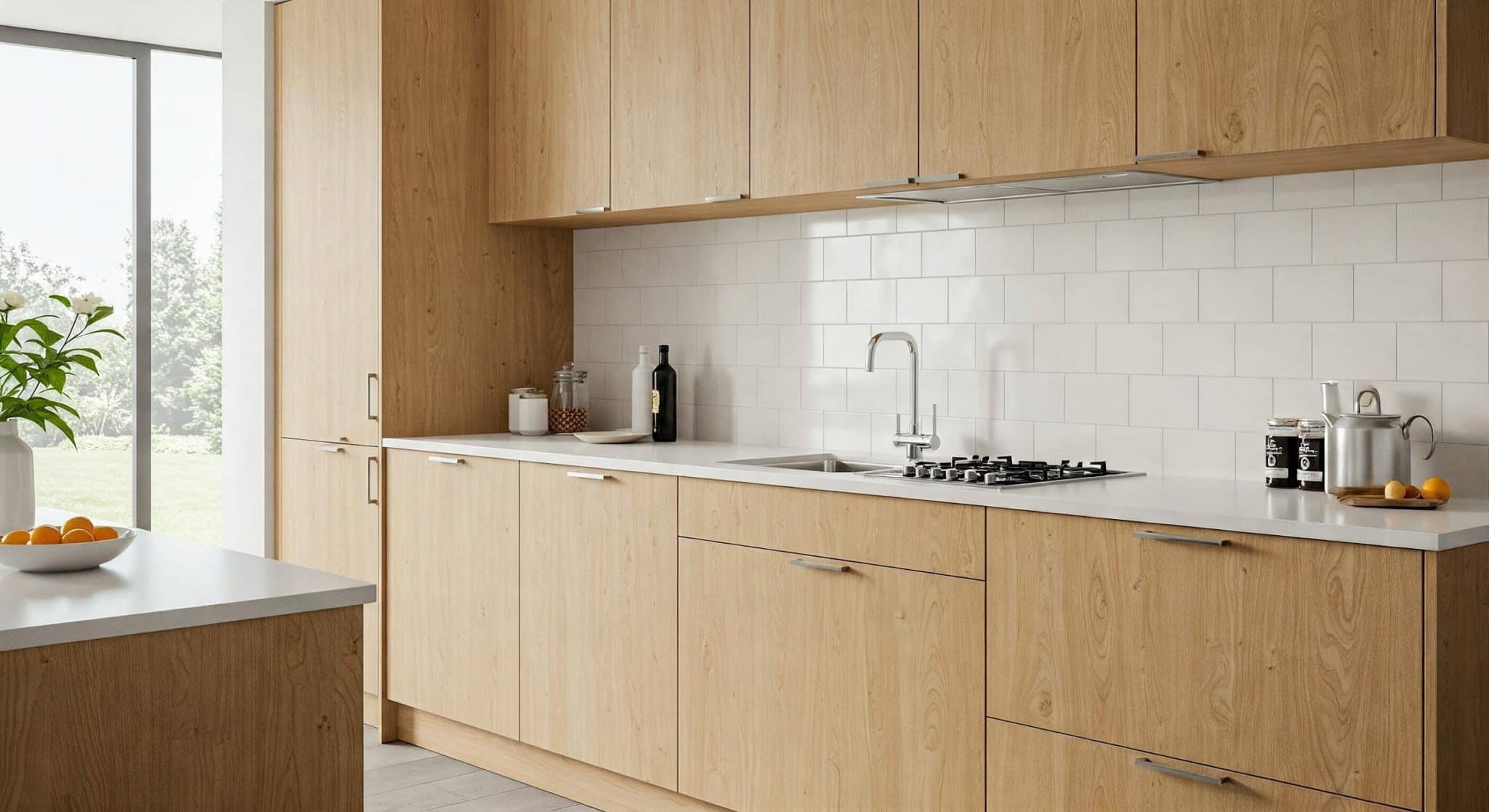
Beech is a durable hardwood with a fine, even grain that gives cabinets a smooth, uniform surface. Its light color, ranging from pale cream to reddish-brown, allows for easy staining and finishing. It is often used in Scandinavian and minimalist designs due to its light, neutral tone and ability to take on custom finishes without obscuring its natural grain.
Unlike more porous hardwoods, beech has a tight grain that minimizes visible knots and variations. However, it is less resistant to moisture than oak or maple, so proper sealing is necessary in humid environments. Cost-wise, beech falls into the mid-range, typically priced lower than maple but higher than alder.
7. Pine: The Softwood Contender
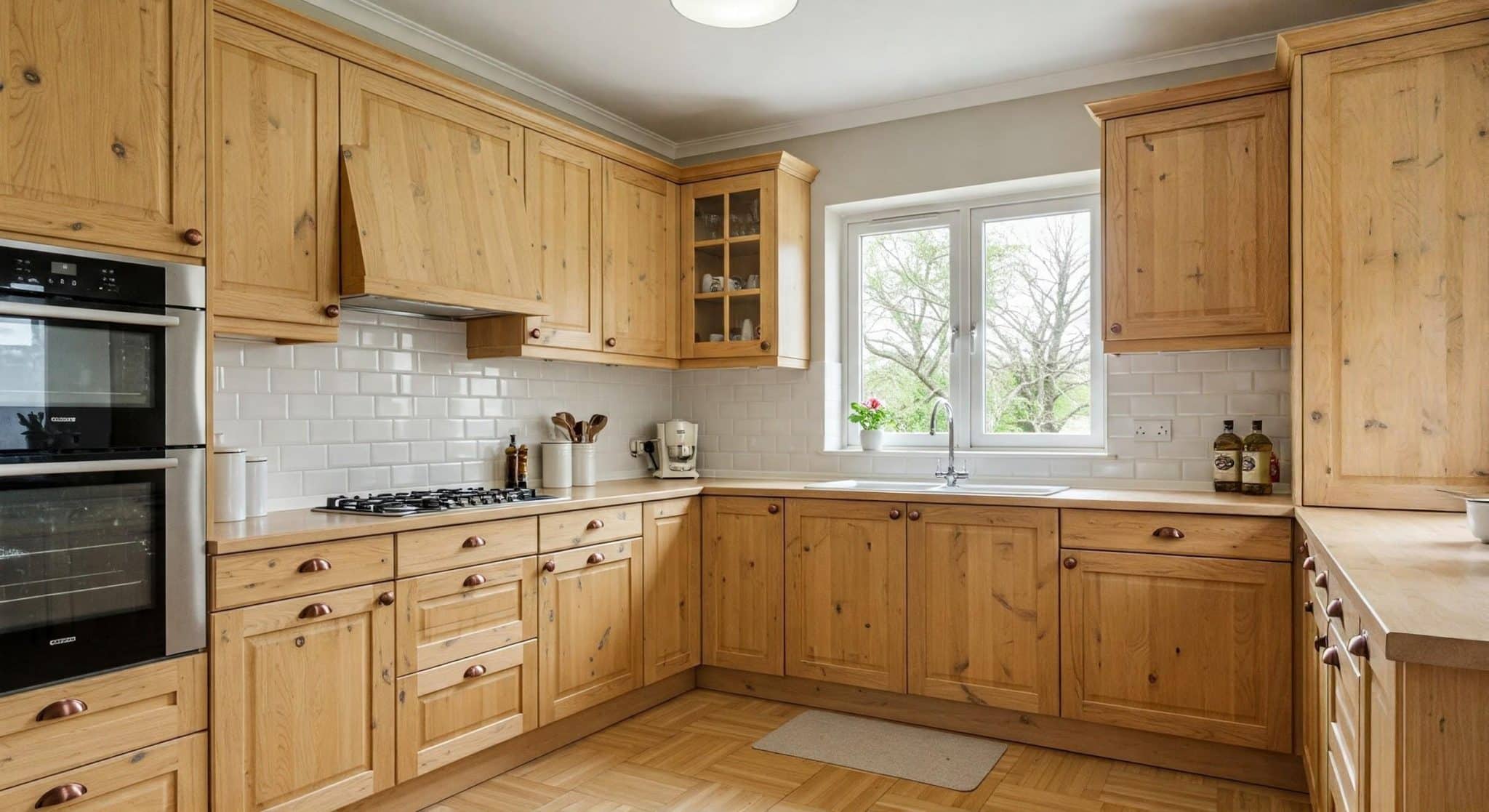
Pine is one of the few softwoods used for kitchen cabinetry, known for its affordability and distinctive knotty grain. Its light color varies from pale yellow to a warm honey tone, creating a natural, rustic look. The frequent knots and imperfections make it a common choice for farmhouse, cottage, and country-style kitchens.
Unlike hardwoods, pine is prone to dents and scratches due to its lower density. Over time, wear and marks become more visible, though some homeowners appreciate this as part of its character. Proper sealing and maintenance help minimize damage and extend its lifespan.
Pine is one of the most affordable wood options for cabinets, making it accessible for budget-conscious projects. It takes stain well but is also often painted to suit different design styles. While not as durable as hardwoods, it remains a practical choice for those who want a natural wood aesthetic at a lower price point.
Picking the Perfect Wood for Your Cabinets
The best wood for kitchen cabinets depends on how the space is used and the look you want to achieve. Hickory and oak hold up well in busy kitchens, while walnut and cherry bring deeper tones that change over time. Maple and beech work for a variety of finishes, and pine offers an affordable, rustic appeal.
Each type reacts differently to wear, moisture, and finishes, so factoring in daily use, maintenance requirements, and how the wood ages over time helps in making the right choice. Looking at samples in person and talking to a cabinetry expert can help you find the best fit for your kitchen.

